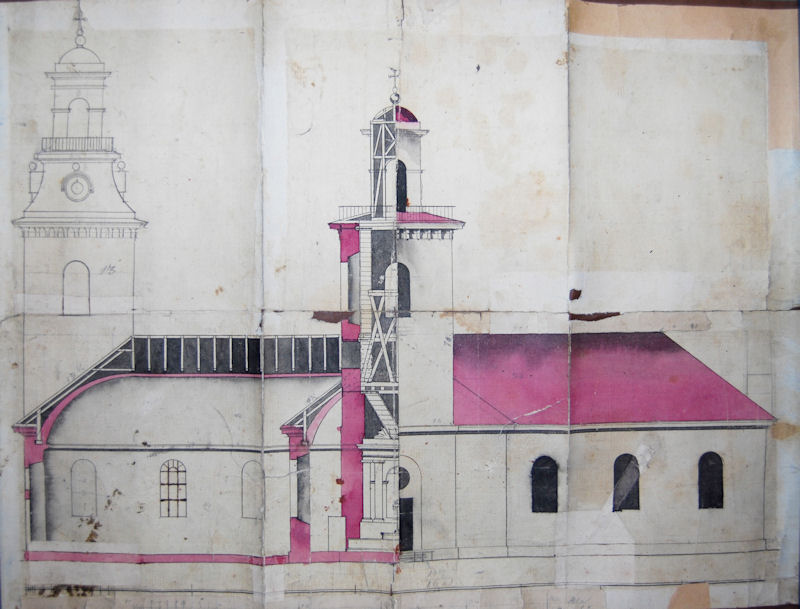Tornimuutos
Kuopion tuomiokirkon tornia ei toteutettu Tukholman yli-intendentinviraston vuonna 1795 tekemien piirustusten mukaisena. Tornimuutoksen suunnittelijasta ja muutoksen taustasta ei ole säilynyt asiakirjoissa varmoja tietoja. Todennäköisesti muutoksen on suunnitellut rakennustöitä toisessa rakennusvaiheessa johtanut arkkitehti Pehr Granstedt. Muutos liittyy ensisijaisesti siihen, että kesken kirkon rakentamisen torniin päätettiin sijoittaa aikakello. Toteutettu torni on selkeästi alun perin ajateltua korkeampi. Lisäksi se on tyylillisesti monimuotoisempi verrattuna alkuperäiseen, hyvin yksinkertaiseen torniin.
Torniin siirrettiin kaksi soittokelloa vanhan kirkon kellotapulista vuonna 1815 ja aikakello saatiin valmiiksi vuonna 1818. Valmistuttuaan torni toimi paitsi kirkonkellojen soittopaikkana, myös kaupungin palovartijoiden tähystys- ja hälytyspaikkana. Kaupungin kolmiomittauksen toteutuksessa, vuosina 1924–1925, tornin ristin juuri toimi mittausten keskuspisteenä.

Piirustuksessa keskellä näkyy alkuperäinen tornisuunnitelma ja vasemmassa reunassa uusi, jonka mukaisesti torni tehtiin.
Piirustus: Kuopion ev. lut seurakuntakyhtymä. Kuva: KUHMU / Kari Jämsén
The blueprint shows the original tower plan in the centre, and the new one on the left, according to which the tower was made.
Blueprint: The Parish Union of the Ev. Lutheran Cathedral in Kuopio. Photo: KUHMU (Kuopio Cultural Historical Museum)/Kari Jämsén
CHANGE IN TOWER PLAN
The tower of the Kuopio Cathedral was not constructed in accordance with the blueprints made by the Superintendent’s Office in Stockholm in 1795. There is no reliable information in the documents about the designer of the changed tower plan or the background of the plan. Probably, the makeover was undertaken by architect Pehr Granstedt, who was in charge of the construction work in the second phase of construction. The makeover was primarily due to the sudden decision to place a clock when the consecration of the cathedral was underway. The implemented tower was clearly higher than originally intended. In addition, it was stylistically more diverse than the original, very simple tower.
Two bells were moved to the tower from the bell tower of the old church in 1815, and the clock was inserted in 1818. Upon completion, the tower served not only as a place for church bells, but also as a lookout- and fire-alert point for the city’s fire guards. In the implementation of the city’s triangulation, between 1924 and 1925, the tower’s cross was at the centre of it.
